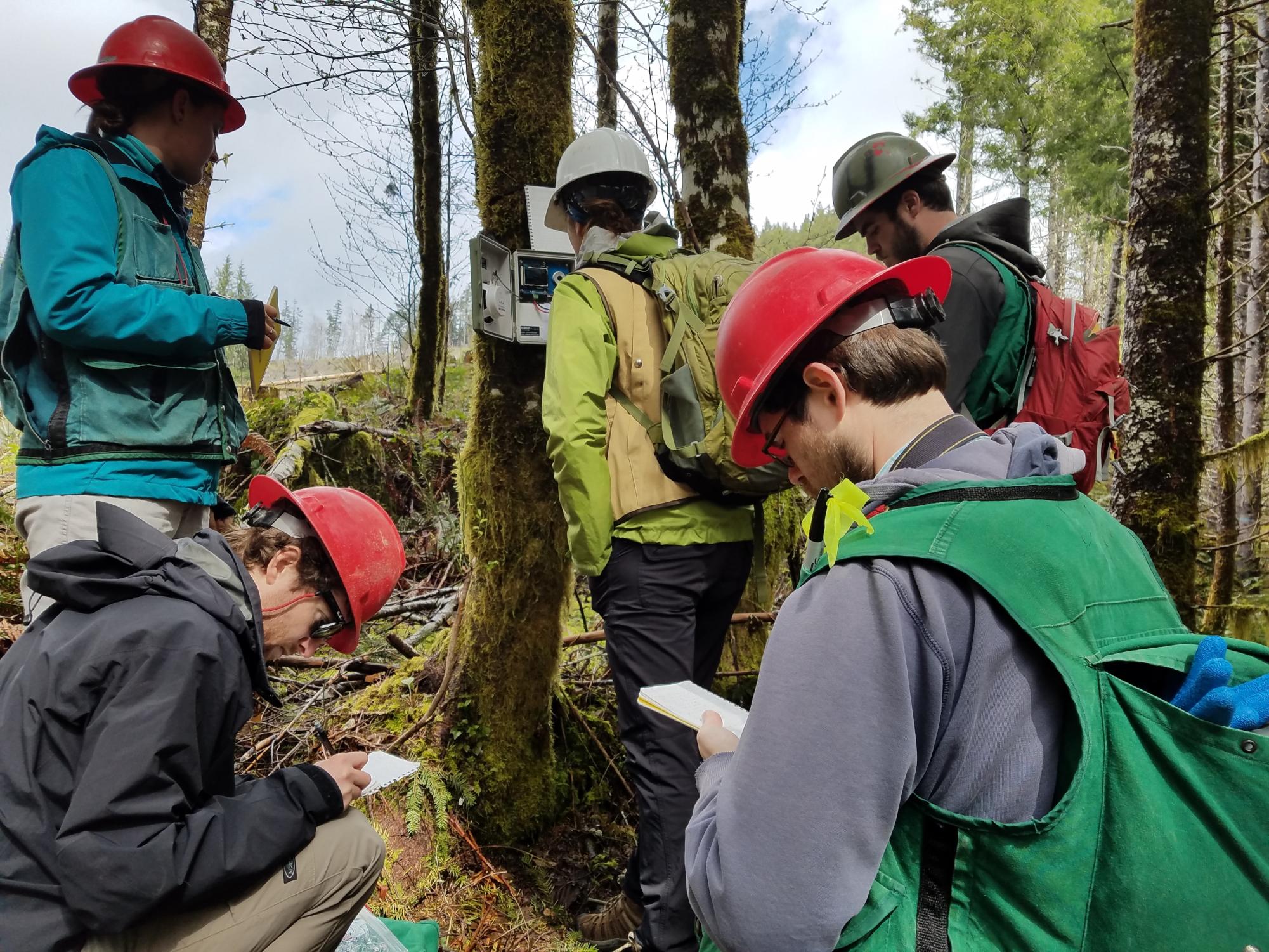Endangered seabirds like the marbled murrelet were once a mystery to forestry researchers but artificial intelligence is transforming the future of ecological data collection.
Researchers at Oregon State University developed an AI model to study marbled murrelet nesting patterns along the West Coast, exponentially increasing their data to monitor this species. The research team paired sound-recording devices with AI to collect millions of hours of audio between 2018 and 2022, according to the study published in May.
The marbled murrelet is an “incredibly cryptic species” because it nests in old growth forests, said Matthew Betts, professor in OSU’s Department of Forest Ecosystems and Society.
“It flies in to nest in old growth at very high speeds in the dark,” Betts said. “The first nest wasn’t even discovered in Oregon until 1991.”
OSU’s College of Forestry began the Oregon Marbled Murrelet Project 10 years ago when the species was considered threatened. The research is funded by the Oregon legislature.
“Millions of dollars a year are spent surveying forest lands for this species because if it’s found, you’re not allowed to cut,” Betts said.
Traditional data collection methods were costly, time-consuming and less efficient because marbled murrelets are so difficult to find.
“This is where bioacoustics came in,” Betts said. “Wouldn’t it be nice if we could learn where they are and where they’re nesting based on just sounds we’re recording?”
To address these sampling challenges, researchers developed a new strategy for collecting marbled murrelet data.
Recording devices are used to collect audio–“bioacoustics”–in old growth forests. Then machine learning algorithms analyze the data and identify marbled murrelet call patterns to predict nesting behaviors.
The published study refers to recordings as “passive acoustic monitoring” and the AI tool as a “convolutional neural network” or the “PNW-Cnet.”
OSU forestry researchers trained a PNW-Cnet to identify marbled murrelet sounds in audio recordings. The program predicts murrelet patterns in space and time with “sufficiently high” accuracy.
When the study began in 2015, manual surveying provided a small fraction of data and accuracy compared to today’s acoustic monitoring and AI analysis.
“We’re looking at 30 minutes with humans at a site, so half an hour, versus 462 hours at a site using AI,” Betts said. “The likelihood of missing something goes down a lot, obviously, and the likelihood of learning something neat about the bird’s behavior goes up.”
Not only did the research team increase recording time at each site but they expanded the geographical range where marbled murrelets are studied.
“We went from having a few groups out doing surveys in Washington and Oregon to having 5,000 recorder sites from Canada to San Francisco that are all concurrently monitoring for marbled murrelets every summer,” said Matthew Weldy, a Ph.D. student in forest ecosystems and society. “We now cover half the western seaboard in a random sampling design (on federal lands).”
The audio recorders operate on a set recording schedule, according to Weldy. Each is battery-powered and equipped with a microphone and SD card to save all data.
“We have crews that carry out recorders as areas become available from snowpack,” Weldy said. “They’re hiking out to all these sites across the Northwest and attaching a recorder to a tree.”
The marbled murrelet project is an ongoing effort to understand the seabird’s habitat and to inform forest management. Researchers hope to refine murrelet data collection in the future.
“The real dream is to try and learn something about whether or not they have a nest nearby and maybe even further to find out if they’re breeding successfully,” Betts said.
Researchers have applied similar strategies to study other birds, such as the spotted owl. This AI-based data collection has potential to affect conservation efforts by broadening our understanding of endangered and threatened species.
“As a scientist, it’s not my job to make final decisions about how policy is implemented. But it’s my job to provide reliable information,” Weldy said. “These tools help me provide better estimates.”
The complexities of this “new type of data for ecology” unite researchers from a variety of fields, according to Weldy.
“We need the help of computer scientists. We need the help of machine learning researchers. We need the help of mathematicians,” Weldy said.“It’s been a good way to cross barriers across departments and bring together people to think about these problems.”



















































































![Newspaper clipping from February 25, 1970 in the Daily Barometer showing an article written by Bob Allen, past Barometer Editor. This article was written to spotlight both the student body’s lack of participation with student government at the time in conjunction with their class representatives response. [It’s important to note ASOSU was not structured identically to today’s standards, likely having a president on behalf of each class work together as one entity as opposed to one president representing all classes.]](https://dailybaro.orangemedianetwork.com/wp-content/uploads/2025/03/Screenshot-2025-03-12-1.00.42-PM-e1741811160853.png)
























